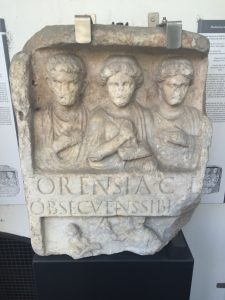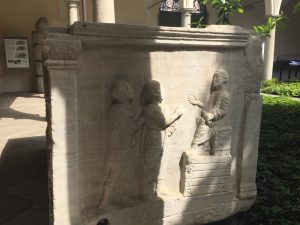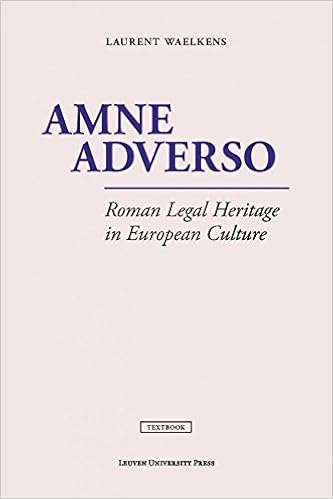This conference notice has just been posted on the classicists list:
International Conference
KU Leuven, 29 June – 1 July 2016
Family squabbles, fights over real estate, disputes over money transactions and assault cases were no less complex to resolve in Antiquity than they are in the modern world. The unique evidence from Egypt (more than 59,000 papyri and 44,000 ostraca) shows a wide variety of mechanisms that could be used to settle interpersonal disputes and to maintain social order within the country. Most of the evidence comes from petitions, official correspondence and reports of court proceedings, which have been the subject of renewed attention in recent years and which give us primarily insight into the day-to-day operation of the legal system and the experiences of the people involved with it. Despite this wealth of information, papyri only offer us snapshots of the disputing process: though some documents record previous decisions made by officials or previous actions taken by victims, the outcome of a dispute is seldom known. This raises several questions concerning the prevailing legal procedures, the length of time that passed before a ‘final’ decision was reached, the government’s ability to enforce legal decisions, and the subversive ways in which the legal system could be used.
According to sociologists, however, the legal system represents only one side of the coin: attempts could also be made to settle disputes privately, with no involvement of officials, for instance by coercion, negotiation and mediation. These private processes of dispute resolution, which are also referred to as ‘self-help’ or ‘personal justice’, are more difficult to discern, because they are not systematically documented in juristic papyri, which constitute the majority of the evidence from Egypt. Documents such as petitions, private correspondence, oracle questions and curse tablets nevertheless offer a rich data set for studying – at least partially – disputing processes that took place ‘in the shadow of the law’ and the institutions that underpinned and strengthened these processes (such as social norms, religion, family values, …).
The aim of this conference is to bring together scholars working on dispute resolution from different angles (petitioning, law, law enforcement, social norms, religion, …) and different fields (papyrology, legal history, sociology, linguistics, …) in order to study the phenomenon of ‘social control’ in Egypt, defined here as all those resources available by which the government attempted to maintain law and order and by which people attempted to resolve conflicts and to assure the norm-conforming behaviour of others, with a particular focus on the transformation of the disputing process between the age of the Ptolemies and the Theodosians. We welcome both papers on dispute resolution in general and papers discussing specific documents, cases or stages of the disputing process.
The keynote lectures will be given by Prof. Dr. Benjamin Kelly (York University), Prof. Dr. Joe G. Manning (Yale University), Prof. Dr. Bernhard Palme (Institut für Alte Geschichte und Altertumskunde, Papyrologie und Epigraphik, Universität Wien) and Prof. Dr. Anne-Emmanuelle Veïsse (Université Paris 1 Panthéon-Sorbonne).
Proposals for papers (30 minutes in length) or posters (size A0) in English, French and German are invited on the following topics:
Methodological issues concerning papyri and other documents as evidence for dispute resolution
Mechanisms of dispute resolution (litigation, arbitration, negotiation, coercion, mediation, …)
Social institutions (social norms, village life, …) and their role in preventing and regulating conflicts
Dispute-related types of documents (petitions, oaths, oracle questions, …)
Officials or other authorities involved in dispute resolution (judges, lawyers, law enforcement officials, priests, estate managers, …)
Social interactions between people and officials
Government policy towards dispute resolution
Importance of individual responsibility of victims for obtaining justice
Importance of socio-economic status of victims for obtaining justice
Effectiveness of disputing processes in ensuring social order
Impact of factors such as war, abuse and corruption on disputing processes
Impact of Ptolemaic/Roman rule on disputing processes
…
Abstracts (max. 200 words) can be submitted electronically through the submission form for papers and posters at the conference’s website (http://www.arts.kuleuven.be/oudegeschiedenis/DREgypt2016) until February 15, 2016. Notification of acceptance will be given by the end of February 2016.
For further information, please contact Sofie.Waebens@kuleuven.be.
Organisers: Prof. Dr. Katelijn Vandorpe (KU Leuven) and Dr. Sofie Waebens (KU Leuven)
Scientific committee: Prof. Dr. Alain Delattre (Université libre de Bruxelles); Prof. Dr. Paul Erdkamp (Vrije Universiteit Brussel); Prof. Dr. Joe G. Manning (Yale University); Prof. Dr. Jakub Urbanik (University of Warsaw); Prof. Dr. Anne-Emmanuelle Veïsse (Université Paris 1 Panthéon-Sorbonne); Em. Prof. Dr. Willy Clarysse (KU Leuven); Prof. Dr. Katelijn Vandorpe (KU Leuven); Dr. Sofie Waebens (KU Leuven)





